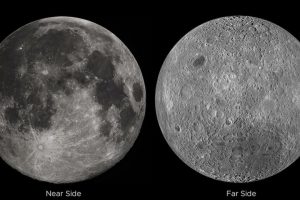
Dr Sermad Mangat & Professor Amtul Razzaq Carmichael
Midday napping, also known as Siesta derives its name from ‘hora sexta’, a Latin term referring to the six hours after dawn. Siesta is a common practice in the Mediterranean, Southern Europe, Middle East, Indian Sub-continent, and parts of China. In these places, high mid-day temperatures make work uncomfortable. This midday nap is also referred to as Taaseela and Qailulah in Arabic, and controra in Italian.
Scientific Benefits of Midday Napping
Midday napping offers numerous benefits, particularly for neurological and cardiovascular health. It enhances alertness and performance, specifically improving executive functions of the brain such as planning, memory retention, and multitasking. [1] [2]. Midday naps effectively aid in the recovery of faculties such as working memory and cognitive abilities, which may decline due to sleep deprivation. [3] A brief midday nap can enhance cognitive abilities and has scientifically proven benefits on tiredness, concentration and attention. [4] [5]
Cardiovascular and Neurocognitive Benefits
Midday napping offers several cardiovascular health benefits; the siesta habit potentially improves long-term cardiovascular health and reduces the risk of aneurysm rupture. [6] [7] Researchers from the University Hospital of Lausanne in Switzerland observed 3,400 people aged 35 to 75 for an average of five years. They discovered that those who napped once or twice per week have a lower risk of incident cardiovascular events. [8]
Midday Napping in Different Populations
The beneficial effects of midday napping are not limited to adults. Evidence suggests that habitual midday napping enhances the neurocognitive function in early adolescents. Scientific studies show that frequent nappers have higher accuracy in sustained attention and nonverbal reasoning tasks, regardless of nigh time sleep duration and quality. [9] Short naps also positively affect mood, as observed in a study where midday nappers reported joy and relaxation. [10] In children, napping is associated with higher verbal IQs, improved academic achievements and reduced internalizing behaviours. Additionally, napping is linked to fewer emotional and behavioural problems.
Indeed, there is evidence suggesting that midday napping can positively impact the health of elderly individuals. Ageing alters our sleep patterns, and napping can improve mental and physical well-being. One study discovered that regular napping lowers the prevalence of cognitive frailty and enhances quality of life in the elderly. [11] Short nap durations are linked to a reduced likelihood of hypertension and a lower systolic blood pressure. Furthermore, another study found that a midday naps increase alertness, as measured by EEG, and lower diastolic blood pressure. [12] [13] [14]. While these findings suggest that regular napping may have benefits for elderly individuals, it is important to note that more research is needed to fully understand the potential effects of napping on this population.
Midday napping, or siesta, has been shown to have several benefits for women, particularly during pregnancy. Research indicates that shorter duration naps can reduce the risk of gestational diabetes mellitus in mothers with shorter nighttime sleep duration. Napping during the day can also counterbalance the sleep deprivation commonly experienced by pregnant women. [15]
In addition to its benefits for pregnant women, siesta has also been shown to enhance physical performance. Studies have demonstrated that napping prior to an all-night work shift can improve performance over the night and also alleviate the heightened pain sensitivity resulting from sleep deprivation. [16] [17]
Additionally, in athletes, napping prior to training or competition can lead to better performance outcomes. [18] Research on athletes has shown that longer naps, lasting 40 or 90 minutes, are more effective in improving exercise performance and physiological responses. [19]
Napping in Islam and Conclusion
Sleep has been recognised as an important part of human behaviour in the Holy Qur’an, where it is referred to as Sinah, a short duration or Naum, a deeper long duration sleep. Midday napping has been shown to be a practice of the Holy Prophet (sa) and Muslims. Hazrat Anas (ra) relates that Muslims used to offer Friday prayers early and have a midday nap afterwards. [20]
The Holy Qur’an mentioned the practice of midday rest and regards it as one of the three times of personal privacy. During these times, it is appropriate for others to seek permission before meeting or seeing you. During this time, individuals have the opportunity to relax and dress casually in the comfort of their privacy. [21]
While the studies mentioned in this article highlight the physical and psychological benefits of napping, the Holy Prophet (sa) guided us to another important factor that would benefit our spirituality as well. He advised that the siesta can help us to easily perform our Tahajjud (pre-dawn voluntary) prayers, which is a potent tool to strive for spiritual excellence. The Holy Prophet (sa) said:
اسْتَعِينُوا بِطَعَامِ السَّحَرِ عَلَى صِيَامِ النَّهَارِ وَبِالْقَيْلُولَةِ عَلَى قِيَامِ اللَّيْلِ
‘Seek help in fasting by eating the pre-dawn meal, and seek help in standing for night prayer by taking a nap during the day.’ [22]
What science shows is beneficial for us; has been taught to Muslim centuries ago to help achieve physical, psychological, emotional as well as spiritual excellence. It is also worth noting that napping is not a replacement for a good night’s sleep, and both are important for overall health and well-being. While evidence suggests that regular midday napping can positively impact cognitive function and mood in early adolescents, it is important to note that these effects may vary among individuals. In summary, while napping can offer benefits, it should be viewed as one part of a healthy sleep routine along with a consistent bedtime and sufficient sleep at night.
About the Authors
Dr Sermad Mangat is a junior doctor currently working in the UK. Dr Mangat is deeply interested in theological issues relevant to medicine.
Professor Amtul Razzaq Carmichael MD, M Ed, FRCS (Gen Surg.), MBBS, is a consultant. She qualified in 1987 with gold medals for academic Excellence and undertook her surgical training at major teaching hospitals in London, Edinburgh and Philadelphia. She has authored many articles for major peer-reviewed scientific journals. She is a senior member of The Review of Religions Editorial Board as well as the Assistant Manager.
ENDNOTES
[1] Sleep. 2006 Jun;29(6):831-40. doi: 10.1093/sleep/29.6.831. Amber Brooks , Leon Lack. A brief afternoon nap following nocturnal sleep restriction: which nap duration is most recuperative?
[2] Sleep Med. 2017 Sep; 37: 88–97. Exploring the nap paradox: are mid-day sleep bouts a friend or foe?
[3] Ibid
[4] Int J Gen Med. 2022; 15: 1381–1391. Qian Wang, Huanhuan Zhu, 1 Ruiming Dai, and Tiantian Zhang. Associations Between Total Sleep Duration and Cognitive Function Among Middle-Aged and Older Chinese Adults: Does Midday Napping Have an Effect on It?
[6] Kang H, Feng X, Zhang B, Guo E, Wang L, Qian Z, Liu P, Wen X, Xu W, Li Y, Jiang C, Wu Z, Zhang H, Liu A. The Siesta Habit is Associated with a Decreased Risk of Rupture of Intracranial Aneurysms. Front Neurol. 2017 Sep 1;8:451.
[7] The Journal of Clinical Endocrinology & Metabolism, Napping Reverses the Salivary Interleukin-6 and Urinary Norepinephrine Changes Induced by Sleep Restriction. Brice Faraut, Samir Nakib, Catherine Drogou, Maxime Elbaz, Fabien Sauvet, Jean-Pascal De Bandt, Damien Léger.Volume 100, Issue 3, 1 March 2015, Pages E416–E426
[8] Heart. 2019 Dec;105(23):1793-1798. Nadine Häusler, Jose Haba-Rubio, Raphael Heinzer, Pedro Marques-Vidal. Association of napping with incident cardiovascular events in a prospective cohort study
[9] Behav Sleep Med. 2019 Sep-Oct; 17(5): 537–551. Xiaopeng Ji, Junxin Li, and Jianghong Liu, The Relationship between Midday Napping and Neurocognitive Function in Early Adolescents
[10] Psychiatry Clin Neurosci. . 2000 Apr;54(2):207-12. Z Luo 1, S Inoué. A short daytime nap modulates levels of emotions objectively evaluated by the emotion spectrum analysis method
[11] Naps and exercise: reinforcing a range of benefits for elderly health, Felipe Hideki Arakaki,Sergio Tufik &Monica Levy Andersen, Pages 886-887 | Received 25 Jan 2019, Accepted 28 Mar 2019, Published online: 16 Apr 2019
[12] Effects of a daytime nap in the aged. Munehisa Tamaki, Ai Shirota, Hideki Tanaka, Mitsuo Hayashi, Tadao Horiformat_quoteCITEhttps://doi.org/10.1046/j.1440-1819.1999.00548.xPublished inPsychiatry and Clinical NeurosciencesPublisherJohn Wiley & Sons, LtdISSN1323-1316eISSN1440-1819Published12 February 2002Volume53Issue2Pages273 – 275
[13] Front. Public Health, 25 August 2022. Sec. Aging and Public Health https://doi.org/10.3389/fpubh.2022.963105. Association of sleep quality and nap duration with cognitive frailty among older adults living in nursing homes
[14] Cai M, Huang Y, Sun X, He Y, Sun C. Siesta is associated with reduced systolic blood pressure level and decreased prevalence of hypertension in older adults. J Hum Hypertens. 2016 Mar;30(3):216-8.
[15] J Clin Sleep Med. 2015 Jun 15; 11(6): 635–643. Minimal Effect of Daytime Napping Behavior on Nocturnal Sleep in Pregnant Women, Rebecca M. Ebert, BS,1 Annette Wood, BA,1 and Michele L. Okun, PhD1,2
[16] Neuroscience & Biobehavioral Reviews. Volume 96, January 2019, Pages 272-289. Neuroscience & Biobehavioral Reviews Fatigue and its management in the workplace. John A.CaldwellaJ. LynnCaldwellbLauren A.ThompsoncHarris R.Liebermanc
[17] PLoS One. 2015; 10(2): e0117425. Napping Reverses Increased Pain Sensitivity Due to Sleep Restriction. Brice Faraut, Damien Léger, Terkia Medkour,, Alexandre Dubois, Virginie Bayon, 1 Mounir Chennaoui, and Serge Perrot Manabu Sakakibar
[18] Nat Sci Sleep. . 2021 Jun 24;13:841-862. doi: 10.2147/NSS.S315556. eCollection 2021. To Nap or Not to Nap? A Systematic Review Evaluating Napping Behavior in Athletes and the Impact on Various Measures of Athletic Performance. Michele Lastella, Shona L Halson, Jacopo A Vitale, Aamir R Memon, Grace E Vincent
[19] Physiological response and physical performance after 40 min and 90 min daytime nap opportunities. Omar Boukhris,Khaled Trabelsi,David W. HillORCID Icon,Hsen Hsouna,Raouf Abdessalem,Achraf Published online: 25 May 2022
[20] Sahih al-Bukhari, Hadith 940
[21] The Holy Qur’an, 24:59
[22] Sunan Ibn Majah, Book of Fasting




Add Comment